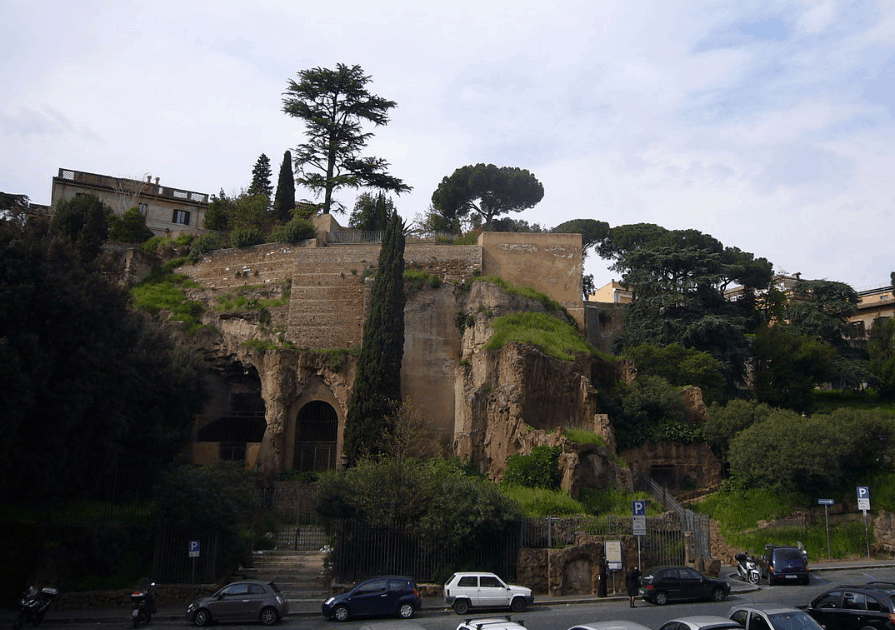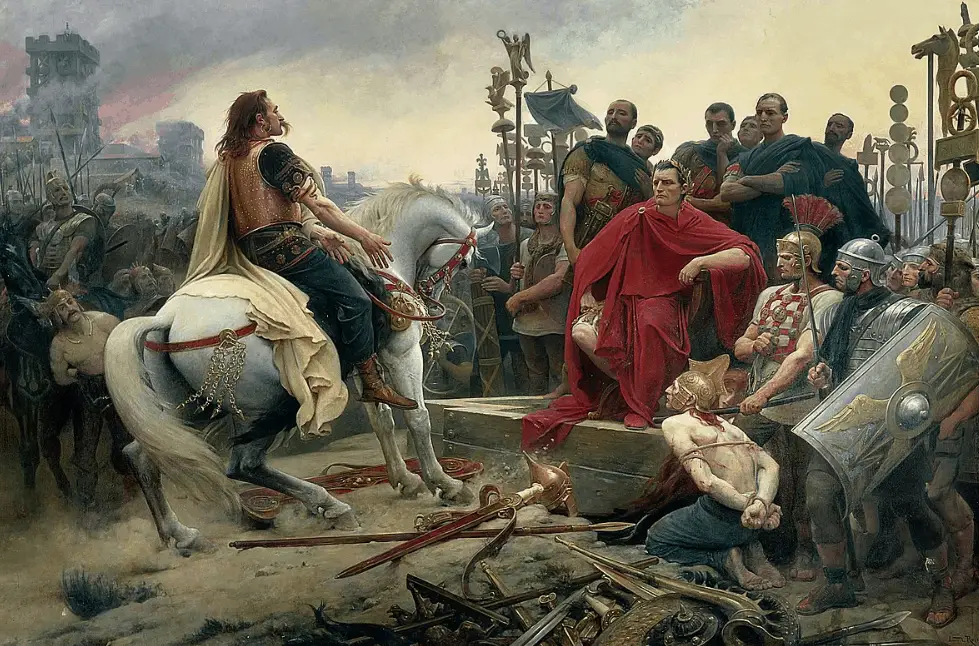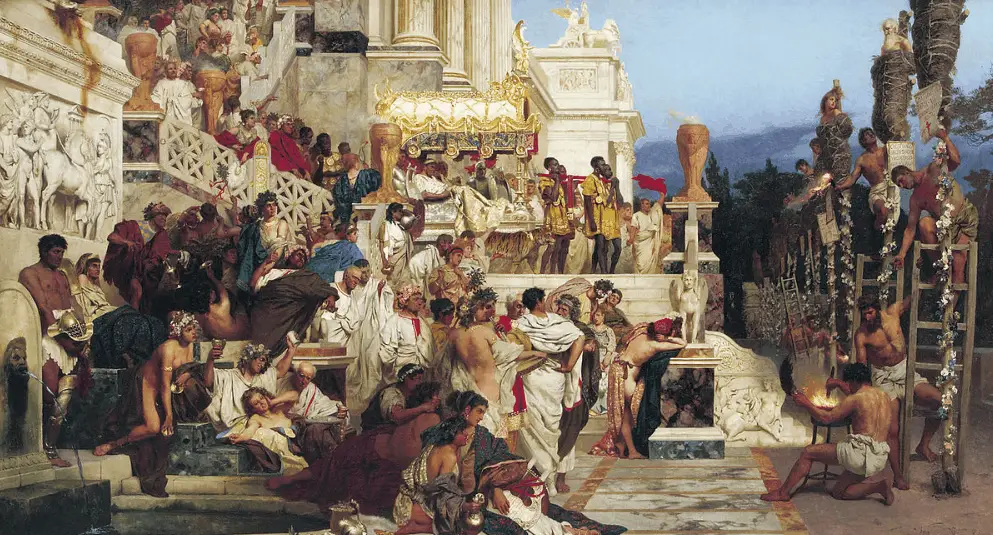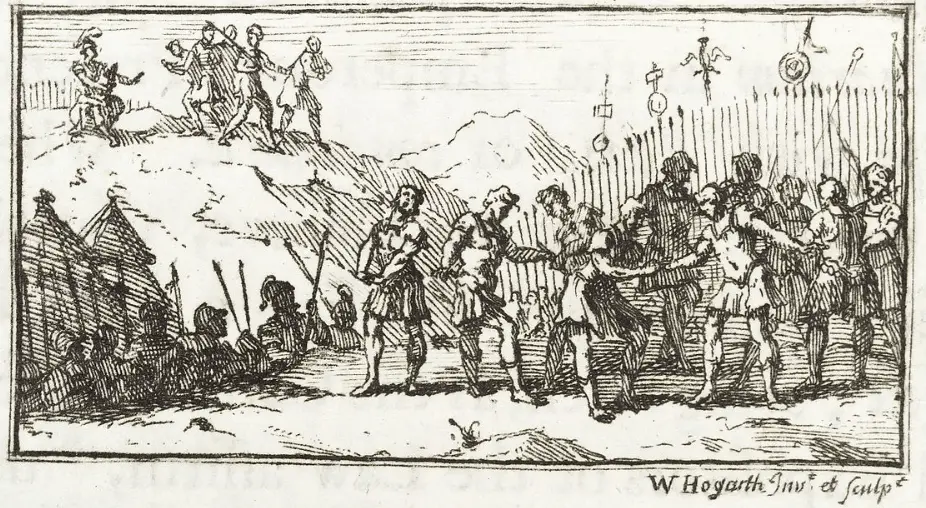The Roman Empire has fascinated historians for centuries. The most powerful empire on earth at the time also happened to be one of the most blood-thirsty.
This is emphasized by Vespasian’s construction of the Colosseum, a huge arena where millions of people and animals lost their lives for the sake of entertainment.
Criminals in the Roman Empire who were sentenced to death were often put to death in the most horrendous ways possible. In this post, we’ll take a closer look at 10 of the most sickening Roman execution methods.
Please be warned, some of these forms of capital punishment of Ancient Rome make medieval punishments look like a walk in the park (well, kinda)!
1. Poena cullei
Poena cullei literally translates to “punishment of the sack,” and refers to a peculiar form of capital punishment in Ancient Rome for people who were found guilty of parricide, which is the act of killing one’s father.
The victim was put into a leather sack together with several animals including a monkey, a snake, a dog, and a rooster. After all of them were put into the sack, it was sewn together and thrown into a river.
We can only imagine how the animals and person inside the sack would react as the unlucky bunch started drowning together.

2. Thrown from the Tarpeian Rock
The Tarpeian Rock is a cliff on the southern end of Capitoline Hill in the center of Rome. The cliff is overlooking the Roman Forum, the old city center of Ancient Rome.
It was one of the most favorite spots to execute various criminals and opponents. The method was pretty simple as well as the victims were just thrown off the 25-meter high (80 feet) cliff.
The cliff was named after one of the Vestal Virgins named Tarpeia who had betrayed the Romans by opening up the city gates for an enemy named Titus Tatius. This event supposedly happened in the 8th century B.C.
After the betrayal was discovered, the other Vestal Virgins crushed Tarpeia with their shields and threw her body off the cliff. Therefore, the cliff was named after her, and betrayal (and other criminal offenses) were punished by being thrown from it.

3. Strangulation
Believe it or not but spilling blood inside the Ancient city of Rome (and outside of the arenas) was actually a big taboo. Therefore, one of the most common methods of execution was strangulation, which conveniently didn’t cause a bloody mess.
The condemned would first be paraded all around the city before being brought to the Roman Forum. There, the executioner would simply strangle the convicted felon to death with a rope.
Sometimes, the prisoner would just be paraded and taken back to his cell where he was then strangled. This was the case with for example Vercingetorix, a captured Gallic tribe leader who was brought to Rome and paraded during one of 4 of Julius Caesar’s triumphs in 46 B.C.

4. Burned alive
After the Great Fire of Rome, Emperor Nero accused the Christians of starting the fire. Thousands of Christians were persecuted and subsequently burned alive as retribution for the fire that destroyed large parts of the city.
Christian Martyrs were burned as early as the 2nd century with a first recorded chronicle of Polycarp, a Christian Bishop. Constantine the Great added burning to death as a punishment for multiple other offenses as well, including rape.
The convicted was forced to put on a “tunica molesta,” a papyrus-based tenue that was smeared with wax, and was tied to a high pole. Burning pitch and lard were poured from the top which incinerated the helpless victim.

5. Decimation
If you were a soldier in the Roman Army, you were the better part of a great group. If your group was considered to be cowardly, decimation was used as a punishment to set things straight!
The entire cohort (about 480 men) was divided into groups of 10, and every tenth man was to be executed. The word “decimation” simply means “removal of the tenth,” so yes, this was quite literally a permanent removal.
The tenth man who had drawn the shortest straw was beaten, clubbed, or stoned to death by the other 9 members of his group.

6. Molten gold poured down the throat
Another ridiculously horrific method of execution was having molten gold, or sometimes molten lead poured into the mouth.
You would assume that the heat from the gold or lead killed the victim, but a study conducted in 2003 concluded that it’s actually the steam produced during the process that actually causes death.
After the molten lead is poured into a body cavity, the steam travels through the body and causes internal organs to burst. Not a way you want to go!
This method wasn’t solely used by the Romans. In 1599, an unfortunate but greedy Spanish governor suffered this fate in the colonial settlement of Logroño in Ecuador in the year 1599.

7. Death by parasites
A very slow and horrifying way to die was being sentenced to death by parasites. This was a popular execution method of Roman Emperor Domitian (81-96 A.D.) and was mainly reserved for Christians.
The victim was naked and put inside a barrel which was closed with only their heads sticking out. They were also force-fed and smeared with honey and milk which attracted insects and parasites.
The barrel was put into the hot sun to attract a swarm of creatures that would feast on the body of the helpless victim. This could go on for multiple weeks until the person inside the barrel died as their body was literally rotting.

8. Boiling in oil
Another one of those horrific Roman execution methods was boiling in oil. Apart from burning alive, the infamous Emperor Nero also boiled thousands of Christians to death as part of his campaign to blame them for the Great Fire of Rome.
This execution method was made legal again by Henry VIII in the year 1531, and multiple people suffered this horrible fate after being sentenced to death for poisoning people.
Here’s a short video as to how boiling to death worked in medieval times.
9. Crucifixion
Crucifixion was another popular method of execution in Roman times, as it combines multiple forms of torture at once.
After being nailed to the cross, which is in itself a horrible ordeal to go through, the victim would hang on the cross for multiple days, most probably with dislocated shoulders, before eventually suffocating to death.
If this took longer, the executioner used a sledgehammer to break the femur bones of the victim, which is one of the most painful experiences a human being can go through, so he would suffocate much faster.
Yes, this wasn’t an easy way to go by any means!

10. Damnatio ad Bestias
Roman execution methods were also part of the Roman games in the arena. They became so popular that they were added to the programming of the games in the Colosseum between animal hunts and gladiator fights at noon!
One of the most popular execution methods involved the convicted being ripped apart by wild animals, a sentence referred to as “Damnatio ad Bestias.”
Many Christians suffered this fate as they were sentenced to death for being part of this dangerous new cult.
It’s estimated that nearly half a million people were killed inside the Roman Colosseum alone, many of those suffering the horrible fate of being sentenced to “Damnatio ad Bestias.”

